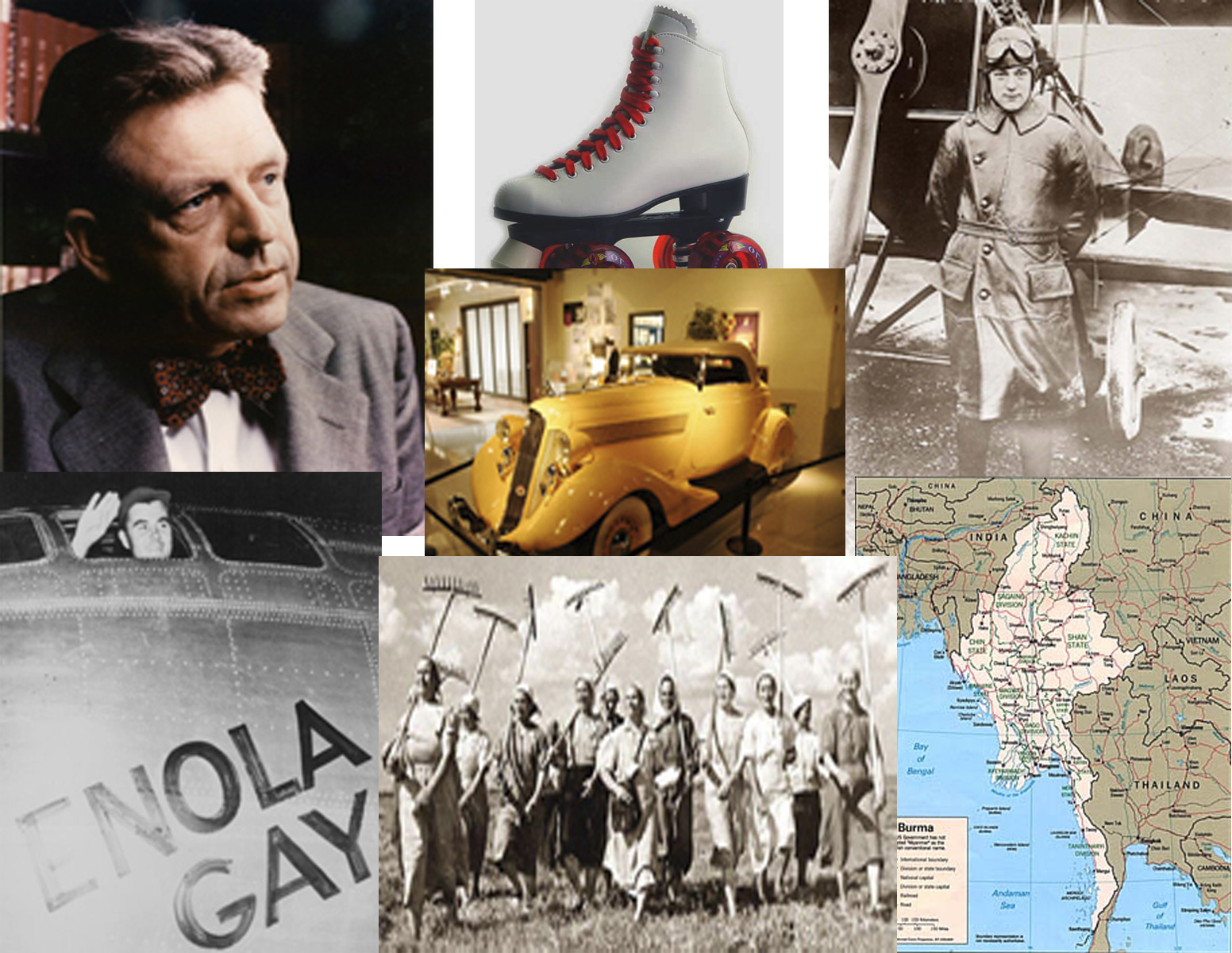Search Results
Giroux, Vincent A., Jr.
22. Retired IU Faculty, 1985 15 Interviews
Indiana University Center for the Study of History and Memory
This project consists of fifteen interviews with former professors of Indiana University. Each interviewee discusses his or her childhood, education, career progression, time at Indiana University, and thoughts on retirement. In addition, most professors comment on the tension, rivalry, friendship, strength, and upward mobility within their respective university departments. The Great Depression and World War II are also widely discussed with regard to the impact they had on the interviewees' careers. The results of this project were published in a book, Academic Memories: Retired Faculty Members Recall the Past at Indiana University, by Hanna Griff, Mary Deane Sorcinelli, and Joan Zirker.
25. Preservers of the Past: Indiana's County Historical Societies, 1995-1997 11 Interviews
Indiana University Center for the Study of History and Memory
This project contains interviews of members of Indiana county historical societies. The counties included are La Porte, Monroe, Noble, Jefferson, Wells, Randolph, Tippecanoe, Vigo, and Johnson. The interviewees discuss local history and the development of the historical society in their area. They describe society events, funding, exhibits, and publications. The members also describe their connections to their local history. They explain why they believe local history should be preserved and the role of the historical society.
Clark, Thomas D.; Winther, Oscar O.
Winther, Oscar O.; Clark, Thomas D.
50. IU Oral History Archive, 1991-2001 194 Interviews
Indiana University Center for the Study of History and Memory
This project is a compilation of interviews of subjects with strong ties to and memories of Indiana University, primarily at the Bloomington campus, including former students, faculty, and staff, among others. The information spans most of the twentieth century and deals with the administrations under presidents Herman B Wells, John Ryan, Thomas Ehrlich, and Myles Brand. The project occurred in two parts. The first round of interviews was with administrators, trustees, and other high-ranking members of the university hierarchy. The second round of interviews was with senior faculty from a number of departments in the College of Arts and Sciences. The project is a survey of Indiana University's history as a whole including information about various academic departments, athletics, student organizations, campus growth, and the university's growth in the twentieth century. This project was funded by President Emeritus John Ryan.
51. Indiana University History Department Centennial, 1994 9 Interviews
Indiana University Center for the Study of History and Memory
In this project, retired professors from the Indiana University Department of History discusses their experiences in the profession. Topics discussed include educational and work history, the history department curriculum, development of the history department over time, prominent people in the department, publishing, teaching, and changes in the student body over time.
54. History: Kinsey Institute for Sex Research, 1971-1972 27 Interviews
Indiana University Center for the Study of History and Memory
The collection of interviews in this project reflects James Jones' study of the Kinsey Institute's evolution and reception at Indiana University. He interviews a variety of individuals associated with the Institute by having worked there or having been a member of a foundation that funded Dr. Alfred C. Kinsey's efforts. The interviewees discuss Dr. Kinsey's dedication to his work, his move from studying gall wasps to human sexual behavior, his effectiveness as an interviewer and lecturer, and his personal commitment to the Institute. There is also mention of Dr. Kinsey's influence on science and the Institute's problems with funding. James Jones eventually published a biography of Dr. Kinsey in 1997. It is entitled Alfred C. Kinsey: A Public/Private Life and it is published by W.W. Norton and Company.
55. History: Indiana University, 1968-1981 90 Interviews
This project is a compilation of interviews of subjects with strong ties to and memories of Indiana University, primarily at the Bloomington campus. The interviewees include former students, faculty, and staff, among others. The information contained in the interviews generally spans a little more than the first half of the twentieth century and often deals with the administrations under presidents William Lowe Bryan and Herman B Wells. The project is a survey of Indiana University's history as a whole including information about various academic departments, athletics, student organizations, campus growth, university development, living conditions, segregation and the treatment of African-Americans, the administration, and the importance of jazz at Indiana University. In addition, the impact of specific events, such as the Great Depression, World War I, World War II, the Vietnam War, and water shortages, is detailed in many of the interviews in this project.
70. Economic History of Indiana in the Twentieth Century, 1976-1980 164 Interviews
Indiana University Center for the Study of History and Memory
This project contains information about local, state, national, and international economic enterprises, focusing mainly on businesses and industries located in and/or originating in the state of Indiana. Some of the industries discussed are the Indiana limestone industry, the local oil industry, coal mining, agriculture, railroads, the automobile industry, banking, insurance, steel production, and supermarkets. The local economic impact of industry and business on a community, unionization, and the workforces of each industry are also discussed.
84. "Bloomington Cares" Oral History Project, 2012-2013 31 Interviews
Indiana University Center for the Study of History and Memory
"Bloomington Cares" Oral History Project was a class project used to study voluntary organizations that focus on historical and cultural activities in the Bloomington community.

